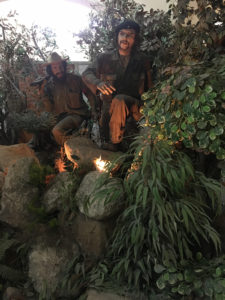 It’s not that Cubans don’t consider Fidel Castro their national hero. Most of them do, or at least pretend to. Fidel, of course, was the leader of the 1959 revolution that turned Cuba into the first communist country in the Western Hemisphere. He held the title Premier until 1976 and then served as President until 2008, when he handed over the reins to his brother Raul.
It’s not that Cubans don’t consider Fidel Castro their national hero. Most of them do, or at least pretend to. Fidel, of course, was the leader of the 1959 revolution that turned Cuba into the first communist country in the Western Hemisphere. He held the title Premier until 1976 and then served as President until 2008, when he handed over the reins to his brother Raul.
Fidel Castro brought universal literacy and health care to the island nation he helped overthrow. Cuban tour guides make sure everyone on the bus understands that. What they don’t talk about is that—in nationalizing private commerce, industry and agriculture—Fidel established a dictatorship that controlled every aspect of Cuba’s political, economic and cultural life. Dissent and opposition were ruthlessly suppressed through imprisonment or execution.
Fidel died in November, 2016 at age 90. His ashes were laid to rest inside a tomb near that of 19th-century Cuban patriot Jose Marti in Santiago. Every half hour, Cuban soldiers perform a goose-stepping changing of the guard ceremony near the tomb, a ceremony during which I got in trouble for moving to a “forbidden” spot to get a better photograph.
Thankfully, I wasn’t arrested, but I did get reprimanded. And I got the picture.
Far more fascinating than the public reverence toward Fidel is the Cuban people’s adoration of Che Guevara. Tour guides become breathless just talking about him. Born in Argentina in 1928, Che finished medical school in the early 1950s and undertook an 8,000-mile trip through South America, travelling by motorcycle, steamship, horse, raft, bus and foot. His memoir “The Motorcycle Diaries,” published in 1993 and made into a movie in 2004, traces those travels.
It was during the trip that he observed the tremendous poverty of the masses and concluded that the only solution was to bring about socialism by means of a worldwide revolution. Che joined Fidel and Raul Castro and a handful of others in a failed attempt to overthrow the U.S.-backed Batista government in Cuba in 1956. That attempt failed, but the survivors became the nucleus of the guerilla army that succeeded in ousting Batista in 1959.
Though in reality Che was repressive, authoritarian and violent—much more of a killer than a healer–he was romanticized not only in Cuba but also in Europe and the United States as a sexy symbol of rebellion in the tumultuous 1960s. When he was captured and killed by the Bolivian army in 1966 while leading a guerilla group there, Che’s martyrdom was insured.
His image stares out from posters, caps, t-shirts and other items sold in every Cuban gift shop I visited. “Hey, lady, want to buy a Che souvenir?” I was asked over and over again. I always shook my head. Che Guevara isn’t a sexy symbol of rebellion to me, though I never said so out loud.
(March 11, 2018)